Proper Pruning
What is a Tree?
A tree is a complex, living organism. There are many different definitions for a tree and for each you can probably think of some exceptions. Webster's defines a tree: 1a: a woody perennial plant having a single usually elongate main stem generally with few or no branches on its lower part. It also defines a shade tree: a tree grown primarily to produce shade.
In general, it can be said that trees:
Proper and Improper Pruning or Trimming
Pruning is the art of sculpting. Leaving the tree as close to its natural shape as possibly at the same time making it safe, healthy, and pleasing to look at.
The tree's natural shape is there for a reason. The root system will always produce and pump up nutrients to feed the entire tree. Large lower limb removal is very bad for the overall health and safety of the trees existence. These large limbs consume large amounts of nutrients to stay alive. If removed, the nutrients will be forced to the remaining upper structure by the pumping action of the root system. This causes the remaining parts of the tree to grow, sometimes 3 to 4 times faster than normal, making all the limbs longer and heavier at the ends. In a very short time, breakage can occur of these now disproportionately sized limbs. Removing the downward growth on these lower limbs and light thinning of the remaining portion is the proper method of arborist societies world wide.
A tree is a complex, living organism. There are many different definitions for a tree and for each you can probably think of some exceptions. Webster's defines a tree: 1a: a woody perennial plant having a single usually elongate main stem generally with few or no branches on its lower part. It also defines a shade tree: a tree grown primarily to produce shade.
In general, it can be said that trees:
- Are perennial plantsHave relatively long life spansHave woody trunksHave bark for protectionHave leaves to produce their own food
- Have roots to gather water and mineral nutrients
Proper and Improper Pruning or Trimming
Pruning is the art of sculpting. Leaving the tree as close to its natural shape as possibly at the same time making it safe, healthy, and pleasing to look at.
The tree's natural shape is there for a reason. The root system will always produce and pump up nutrients to feed the entire tree. Large lower limb removal is very bad for the overall health and safety of the trees existence. These large limbs consume large amounts of nutrients to stay alive. If removed, the nutrients will be forced to the remaining upper structure by the pumping action of the root system. This causes the remaining parts of the tree to grow, sometimes 3 to 4 times faster than normal, making all the limbs longer and heavier at the ends. In a very short time, breakage can occur of these now disproportionately sized limbs. Removing the downward growth on these lower limbs and light thinning of the remaining portion is the proper method of arborist societies world wide.
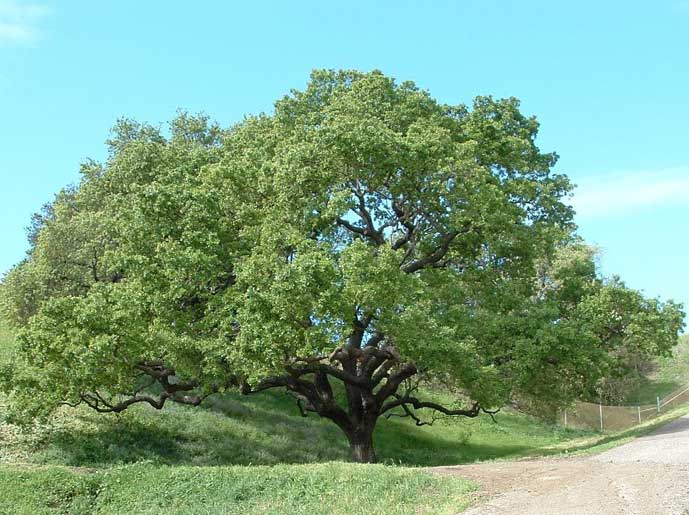
Oak tree with proper pruning
Click to enlarge
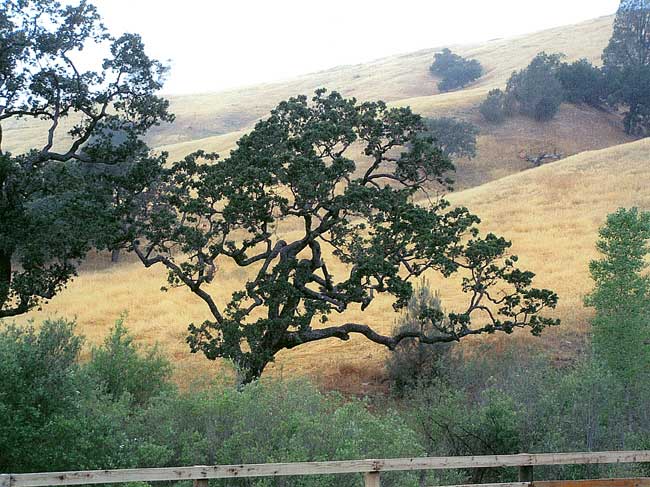
Badly trimmed Oak tree
Click to enlarge
Trimming the upper structure is the remaining factor. This upper area should be pruned lightly leaving some small inner branches and more thinning in the tip areas where they are heaviest. 1/4th to 1/3rd of the foliage in all that should be removed over the entire length of each limb. Dead and diseased material will be extracted at the same time. This should leave the tree evenly thinned so wind can pass through it instead of pushing against it. Sun light reaches the inner part of the tree in moderation and shade for houses, yards parking areas, etc. will be maintained.
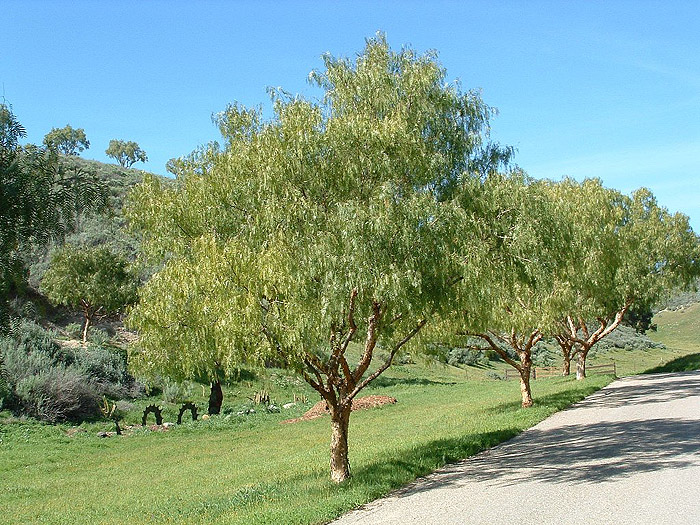
Pepper tree with proper pruning
Click to enlarge
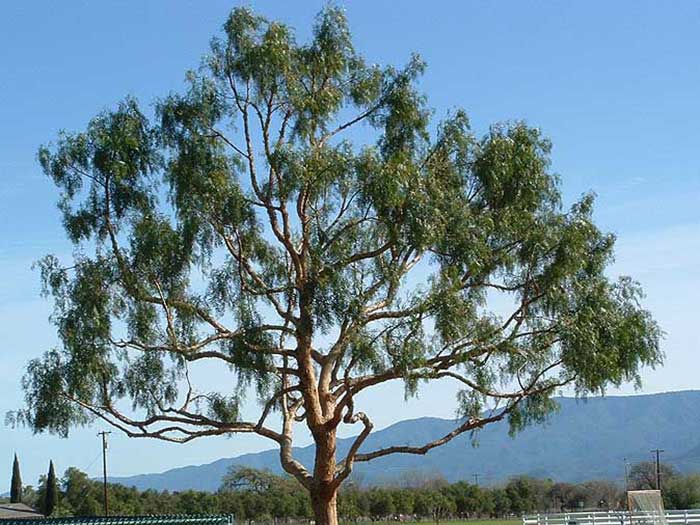
Badly trimmed Pepper tree
Click to enlarge
Lion Tailing
Lion tailing is the "gutting-out" of a tree by removing a large number of inner branches. The limbs of the tree look like a lions tail after pruning. The limbs will appear long and slender with a puff of foliage at the end.
Lion tailing
Lion tailing is the "gutting-out" of a tree by removing a large number of inner branches. The limbs of the tree look like a lions tail after pruning. The limbs will appear long and slender with a puff of foliage at the end.
Lion tailing
- Is a form of over-pruning. Too much foliage is removed so that the health of the tree is often jeopardized.
- It leaves too much weight at the ends of the branches.
- Exposes the inner portion of the tree to sunburn and growth of water sprouts.
- May make your tree a hazard since the branches may become weak and break.
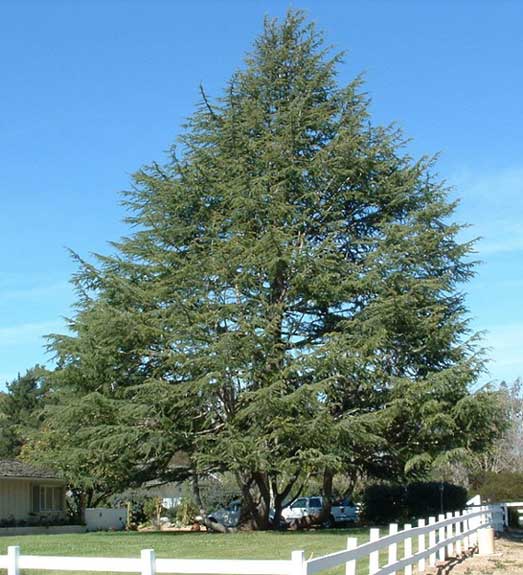
Cedros Deodora properly Trimmed
Click to enlarge
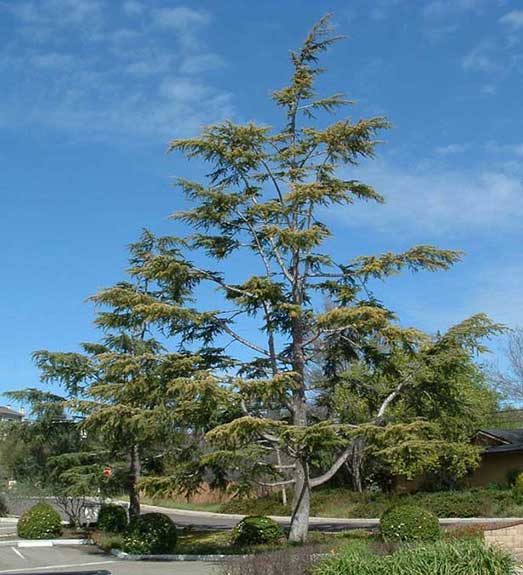
Lion Tailed Cedros Deodora
Click to enlarge
Lion tailing usually removes 60 to 70% or more of the tree's limbs. Under proper pruning methods, only 25 to 30% is the recommended amount of foliage to safely remove from any tree. Santa Ynez Valley Tree Care does not practice lion tailing and never removes more than 30% of foliage from any tree. Proper tree maintenance usually takes a little longer and requires a skilled eye. The reason for this is more of the beautiful limbs are left on the tree and lightly cleaned rather than removed. The cleaning of each limb is time consuming, and time is money.
When is the Best Time to Prune Trees?
Pruning trees does not have to be limited to fall or winter. Granted fall and winter are good times to prune as some trees are dormant.Birches, dogwoods, elms, hackberries, magnolias, maples, poplars, walnuts, willow, and a few other trees are known as "bleeders". When these species are pruned in late winter or early spring, the wounds may bleed. This flow of sap is more unsightly than damaging to the tree. In fact , sap at this time of year is roughly 98% water and 2% sugar, so little energy is lost through a bleeding wound. The sap flow will taper off and cease as the new leaves turn dark green and harden. Pruning these trees could be delayed until the leaves turn dark green and harden if you have aesthetic concerns.
There are some species of trees susceptible to insect infestations and should only be pruned in winter when the smell of bleeding wounds will be lessened due to a lessening of sap flow. Insects are able to smell this sap sometimes for miles. Such is the case with conifers - pine, juniper, cypress, etc.
When is the Best Time to Prune Trees?
Pruning trees does not have to be limited to fall or winter. Granted fall and winter are good times to prune as some trees are dormant.Birches, dogwoods, elms, hackberries, magnolias, maples, poplars, walnuts, willow, and a few other trees are known as "bleeders". When these species are pruned in late winter or early spring, the wounds may bleed. This flow of sap is more unsightly than damaging to the tree. In fact , sap at this time of year is roughly 98% water and 2% sugar, so little energy is lost through a bleeding wound. The sap flow will taper off and cease as the new leaves turn dark green and harden. Pruning these trees could be delayed until the leaves turn dark green and harden if you have aesthetic concerns.
There are some species of trees susceptible to insect infestations and should only be pruned in winter when the smell of bleeding wounds will be lessened due to a lessening of sap flow. Insects are able to smell this sap sometimes for miles. Such is the case with conifers - pine, juniper, cypress, etc.